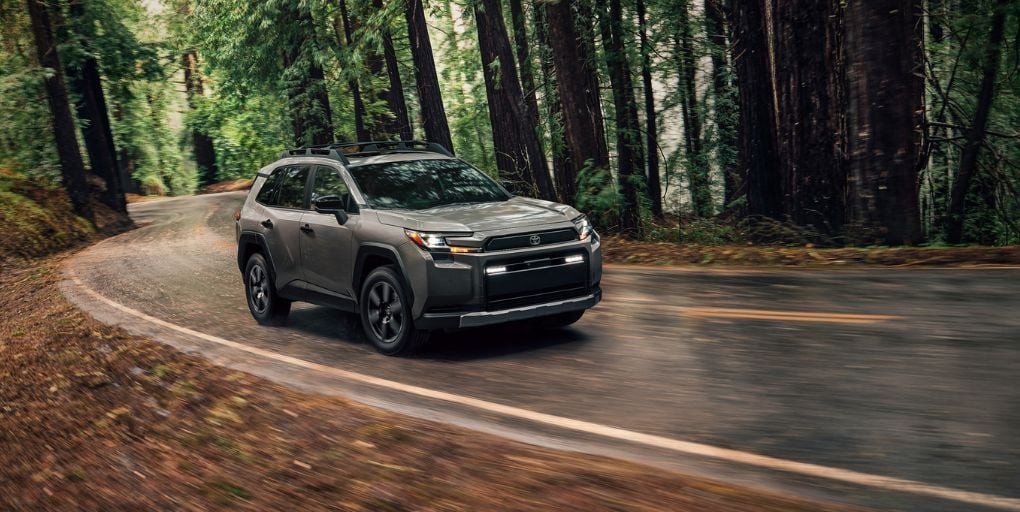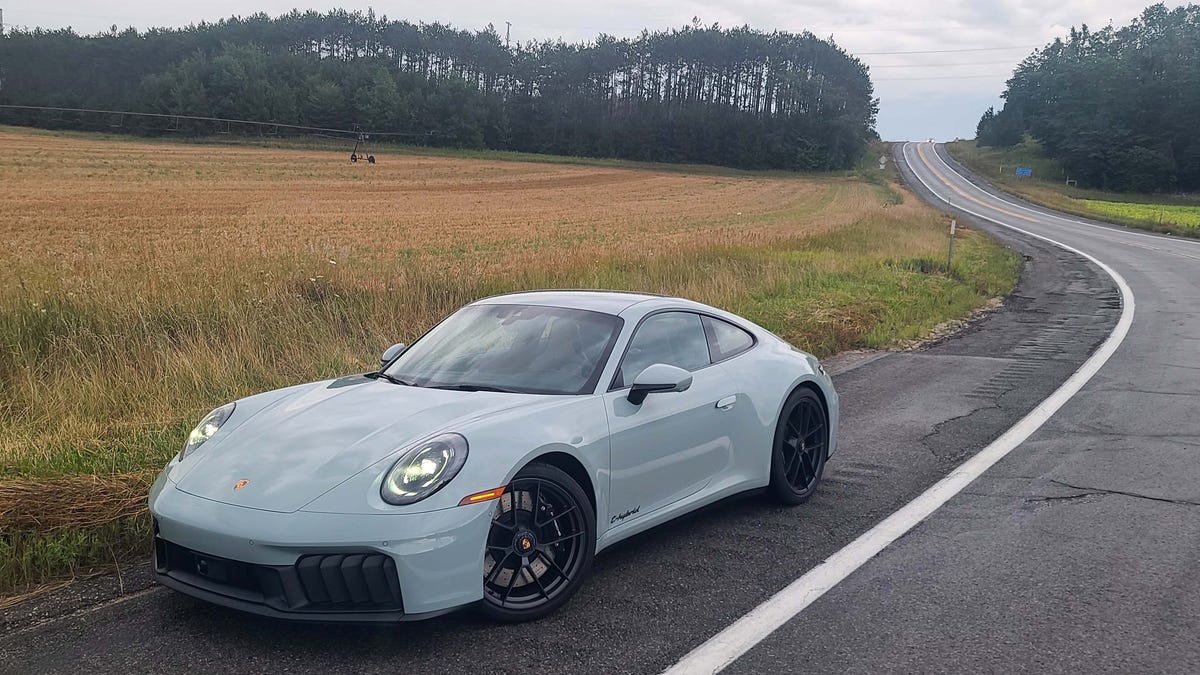2025 Year-To-Date U.S Auto Sales Results

Much like this spring when buyers hurried into showrooms ahead of tariff deadlines, the third quarter brought another sales surge. This time it was the expiration of the $7,500 federal EV tax credit at the end of September that drove a wave of deliveries, lifting U.S. light-vehicle sales and setting several electric-vehicle records across the industry.
General Motors was among the biggest winners. The company’s U.S. light-vehicle sales rose nearly 8 percent in the quarter, helped by record electric-vehicle deliveries. Cadillac stood out with a 25 percent jump, marking its best quarter since 2013. GMC improved 8.6 percent and Chevrolet 8.3 percent, while Buick slipped 14 percent, ending a string of ten consecutive quarterly gains. For the first nine months of the year, GM has already sold more electric vehicles than it did in all of last year.
Ford also set a record for electrified vehicles. Its overall U.S. sales rose 8.5 percent in the quarter, with the Ford brand up 9.4 percent. Lincoln went the other way, down 7.6 percent. Ford’s electric models, including the Mustang Mach-E and F-150 Lightning, posted their strongest numbers yet as buyers raced to lock in incentives before they disappeared.
September capped the quarter with particular strength. Deliveries rose 5.5 percent that month, and the industry’s annualized selling rate reached 16.4 million, signaling how powerful incentives can be in pulling demand forward.
Toyota Motor North America turned in one of the strongest performances with a 16 percent jump in the third quarter. The rebound was driven by strong hybrid sales and renewed availability of its three-row crossovers following a lengthy stop-sale last year. Lexus also contributed with double-digit growth, giving Toyota momentum in the large crossover and hybrid markets.
Nissan benefited from a retail push on domestically built models. Nissan brand sales rose 6.4 percent in the quarter, while the group overall, including Infiniti, gained 5.3 percent to 223,377 units.
Hyundai and Kia continued their upward run with record third-quarter results. September sales rose 14 percent at Hyundai and 11 percent at Kia. Hyundai marked its twelfth straight monthly increase, and Kia added its third consecutive gain. Both brands remain strong players in the crossover and EV markets, with Hyundai announcing a major price cut of up to $9,800 for the 2026 Ioniq 5 while still offering generous incentives on 2025 models through October.
Stellantis ended an eight-quarter slump with a 6.2 percent U.S. sales increase. Jeep led the way, recording its second consecutive quarterly gain. The brand’s recovery proved critical in shifting the company’s momentum back into positive territory after a long stretch of declines.
Honda did not fare as well. Third-quarter U.S. sales for American Honda slipped 2 percent, reflecting slower demand for nonelectric models. Honda brand sales were down 1.5 percent, and Acura dropped 6.7 percent. Hybrids remain a relative bright spot, but the softer demand highlighted the challenges of relying heavily on traditional gasoline offerings in a market increasingly shaped by electrification.
Volkswagen of America also struggled, posting its second consecutive quarterly decline. Broad weakness across the lineup offset gains in a handful of models, including the ID.4 electric crossover. Audi finally stopped its long slide, eking out enough growth to end a streak of six straight quarters of declines, but overall performance remained tepid compared with rivals.
The third quarter painted a clear picture of the industry’s shifting dynamics. With the clock ticking on the federal EV incentive, buyers flocked to showrooms to take delivery of electric models that just months earlier might have sat longer on dealer lots. Automakers with strong EV lineups reaped the benefits, while those more dependent on conventional models saw slower or negative results.
The expiration of the credit raises questions for the rest of the year. With demand pulled forward, the fourth quarter will likely show softer results, especially for EVs. Automakers are already preparing with new incentive programs, deeper discounts, and in some cases sticker-price reductions on upcoming models. Hybrid sales continue to grow as a bridge for consumers not ready to commit fully to electric, and larger crossovers remain in strong demand.
The September surge demonstrated how policy can influence consumer behavior, just as tariffs did earlier in the year. For now, the third quarter will be remembered as a high-water mark for EV sales, with GM and Ford leading the way and brands like Toyota, Hyundai, and Kia showing that hybrids and new crossovers can move the needle as well. Whether the market can sustain that pace without federal support remains the biggest open question as the industry heads into the final stretch of 2025.
This Toyota vs. Ford race is a fun one to watch as only 24,000 sales separate them out of over 3.1 million combined sales. This one is too close to call with the best quarter of the year coming up.
Here are your winners and losers through three quarters of 2025 and how they did versus the same period in 2024:
- Toyota: 1,595,301 Up 7%
- Ford: 1,571,800 Up 7%
- Chevrolet: 1,370,653 Up 9%
- Honda: 998,716 Up 4%
- Hyundai: 678,349 Up 11%
- Nissan: 673,260 Up 2%
- Kia: 636,148 Up 9%
- Subaru: 483,037 Down 2%
- GMC: 480,759 Up 10%
- Jeep: 449,937 Up 0.2%
- Mazda: 319,664 Up 2%
- Ram 307,701 Down 1%
- Lexus: 270,575 Up 9%
- BMW: 253,840 Up 9%
- Volkswagen: 247,015 Down 10%
- Mercedes-Benz 223,800 Up 6%
- Buick: 156,835 Up 14%
- Cadillac: 132,629 Up 19%
- Audi: 128,708 Down 5%
- Acura: 99,283 Up 2%
- Chrysler: 90,732 Down 6%
- Volvo: 90,701 Up 1%
- Land Rover: 87,200 Up 23%
- Lincoln: 74,530 Up 6%
- Dodge: 73,601 Down 38%
- Mitsubishi: 73,400 Down 11%
- Genesis: 58,830 Up 13%
- Porsche 57,099 Up 5.6%
- Infiniti 38,643 Down 9%
- Mini: 21,862 Up 25%
- Jaguar: 6,560 Down 29%
- Alfa Romeo: 4,778 Down 30%
- Maserati: 3,750 Down 26%
- Lamborghini: 2,295 UP 5.3%
- Bentley: 2,215 Down 5%
- Rolls-Royce: 1,170 Up 1%
- Fiat: 1,237 Up 57%
- McLaren 860 Up 5.5%
Electrics
As expected, we saw a surge of electric vehicles sales toward the end of the 3rd quarter, as the $7,500 federal rebates expired. I will give you what was reported, but almost all EV makers, including Tesla, “estimate” sales. Not sure why, it’s not hard to count how many of your cars got sold. This is why most of these numbers are meaningless to me, but you can decide for yourself.
- Tesla: 404,500 Down 12%
- Rivian: 30,350 Down 19%
- Lucid: 5,700 Up 50%
- Polestar: 4,925 Down 3%
- Vinfast: 1,755 Down 1%
| Manufacturer | Jan-Sept. 2025 | vs 2024 |
1. Toyota |
1,595,301 |
7% |
2. Ford |
1,571,800 |
7% |
3. Chevrolet |
1,370,653 |
9% |
4. Honda |
998,716 |
4% |
5. Hyundai |
678,349 |
11% |
6. Nissan |
673, 260 |
2% |
7. Kia |
636,148 |
9% |
8. Subaru |
483,037 |
2% |
9. GMC |
480,759 |
10% |
10. Jeep |
449,937 |
0.2% |
11. Mazda |
319,664 |
2% |
12. Ram |
307,701 |
1% |
13. Lexus |
270,575 |
9% |
14. BMW |
253,840 |
9% |
15. Volkswagen |
247, 015 |
10% |
16. Mercedes-Benz |
223,800 |
6% |
17. Buick |
|
|
18. Cadillac |
132,629 |
19% |
19.Audi |
128,708 |
|
20. Acura |
|
|
21. Chrysler |
90,732 |
6% |
22. Volvo |
90,701 |
1% |
23. Land Rover |
87,200 |
23% |
24. Lincoln |
74,530 |
6% |
25. Dodge |
73,601 |
38% |
26. Mitsubishi |
73,601 |
11% |
27. Genesis |
58,830 |
13% |
28. Porsche |
57,099 |
|
29. Infiniti |
38,643 |
9% |
30. Mini |
21,682 |
25% |
31. Jaguar |
6,560 |
29 % |
32. Alfa Romeo |
4,778 |
30% |
33. Maserati |
3,750 |
26% |
34. Lamborghini |
2,295 |
5.3% |
35. Bentley |
2,215 |
5% |
36. Rolls-Royce |
1,170 |
1% |
37. Fiat |
1,237 |
57% |
38. McLaren |
860 |
5.5% |
link






